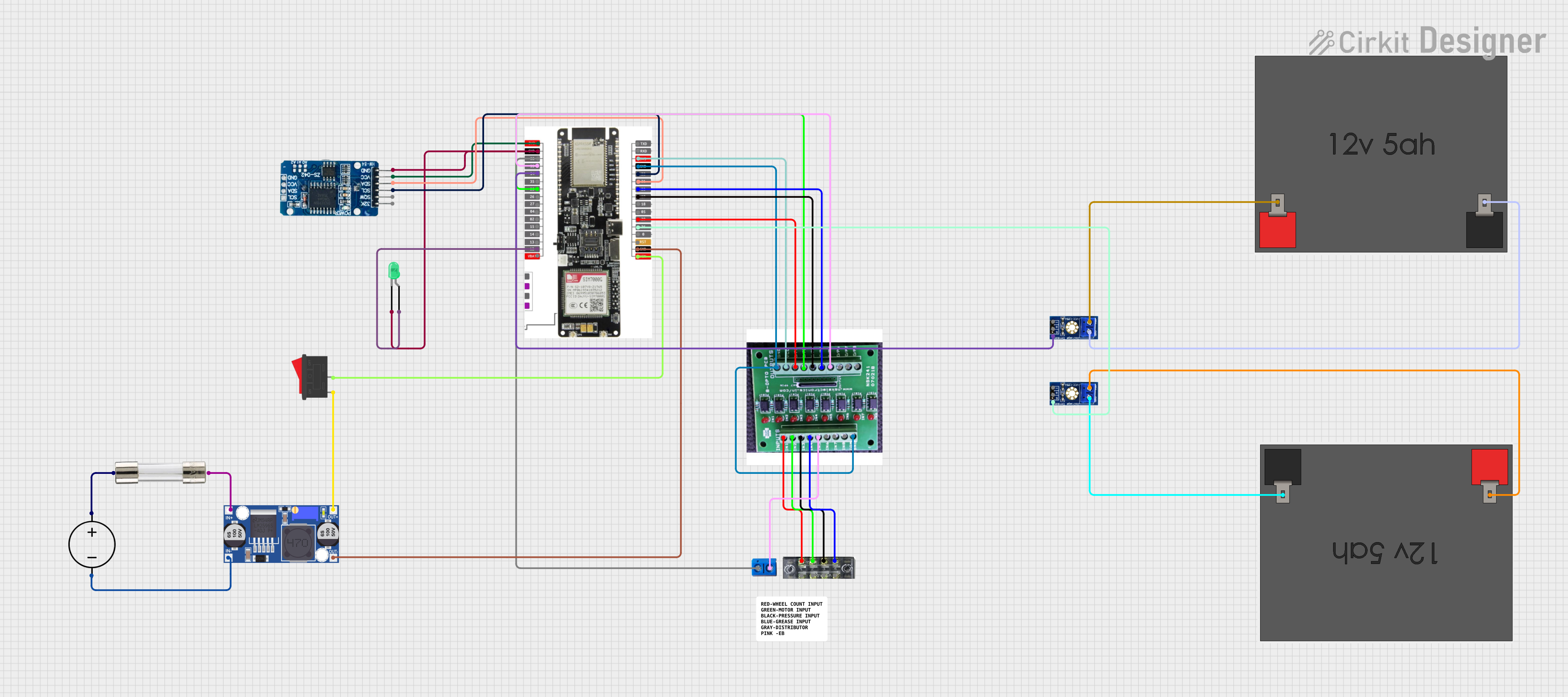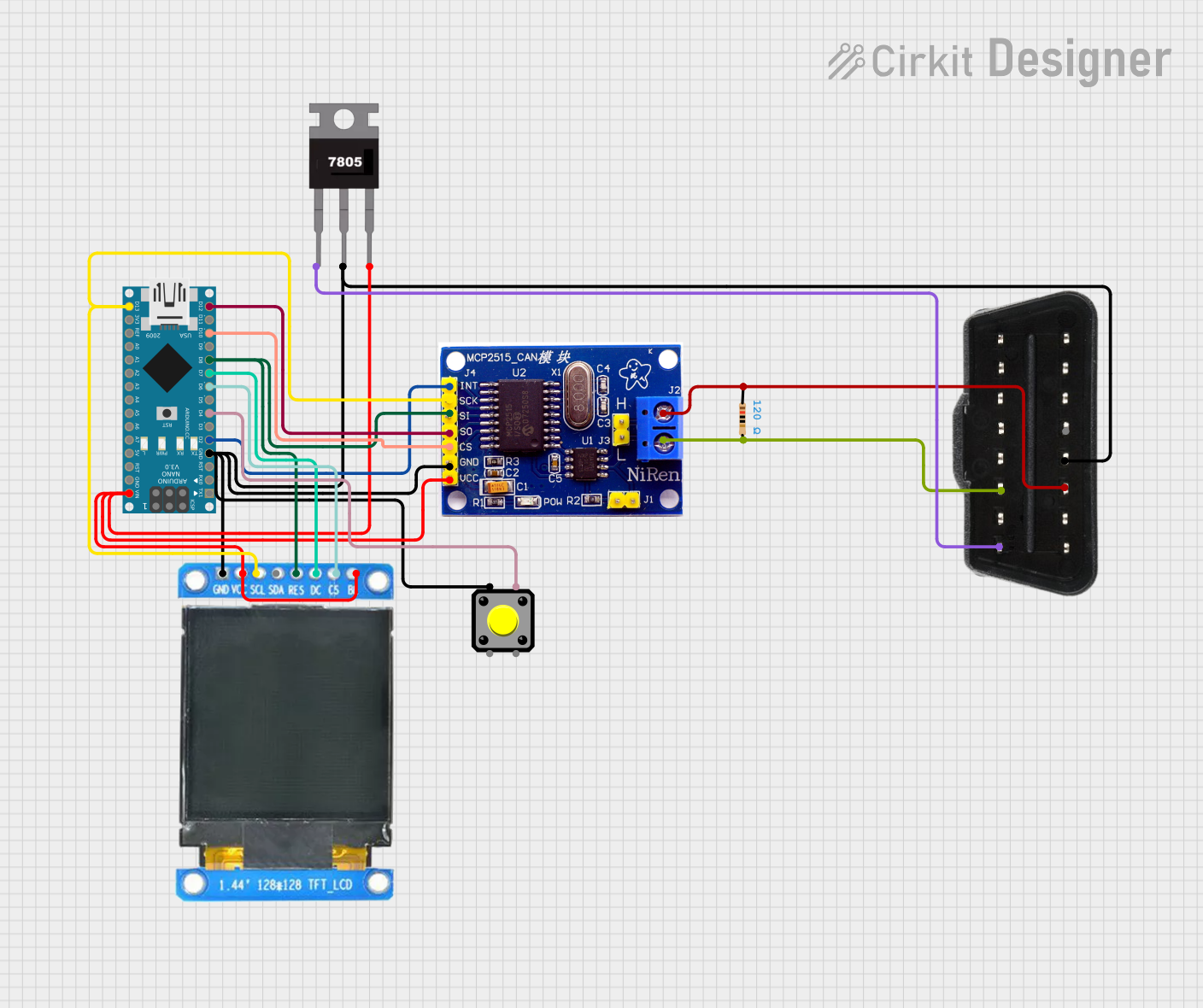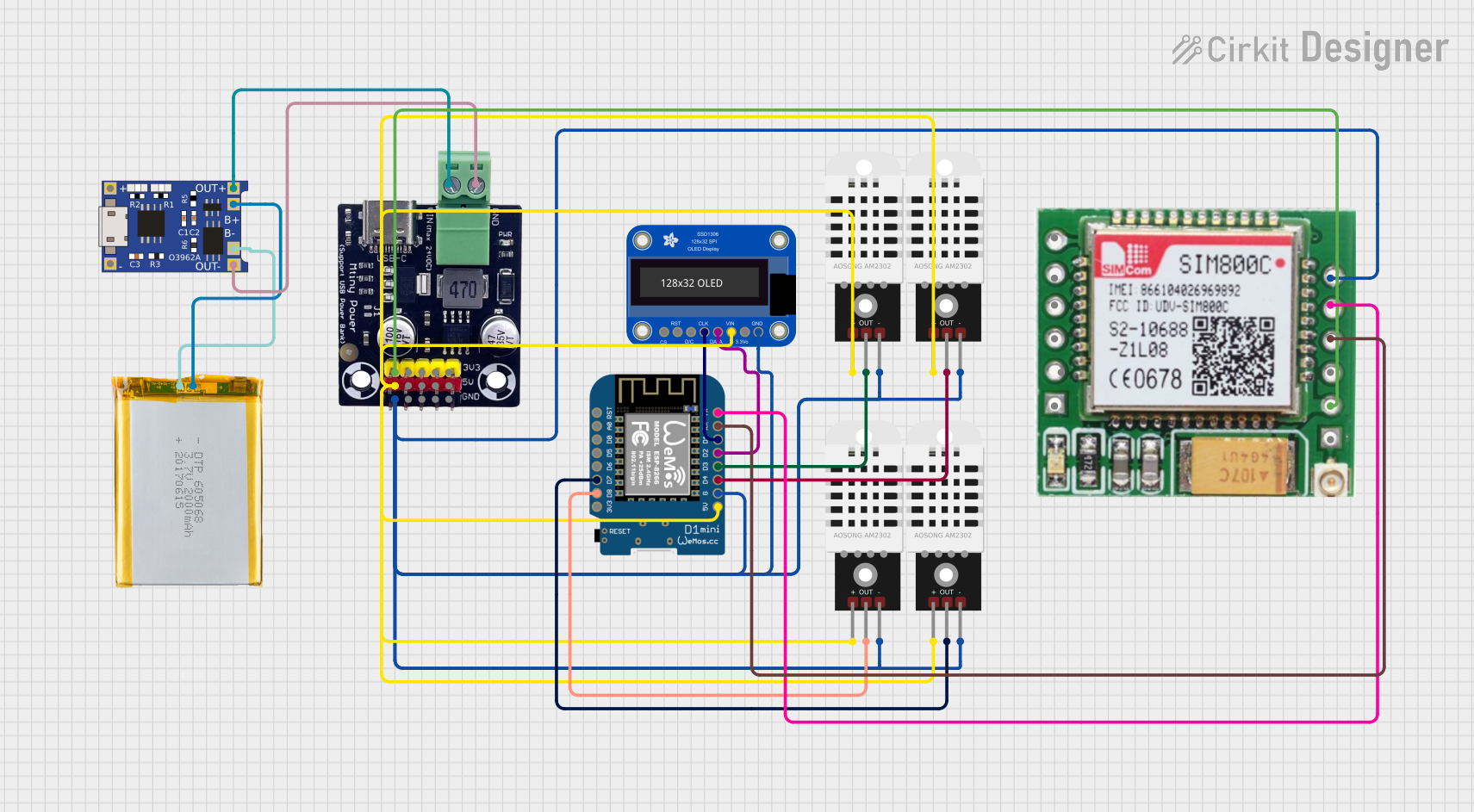
How to Use TMV 0505D: Examples, Pinouts, and Specs

 Design with TMV 0505D in Cirkit Designer
Design with TMV 0505D in Cirkit DesignerIntroduction
The TMV 0505D is a compact transformer module designed for DC-DC conversion. It is widely used in power supply applications where isolation and voltage regulation are required. This module is particularly suitable for circuits that demand a reliable and efficient power source in a small form factor. Its robust design ensures stable performance, making it a popular choice in industrial, medical, and telecommunications applications.
Explore Projects Built with TMV 0505D

 Open Project in Cirkit Designer
Open Project in Cirkit Designer
 Open Project in Cirkit Designer
Open Project in Cirkit Designer
 Open Project in Cirkit Designer
Open Project in Cirkit Designer
 Open Project in Cirkit Designer
Open Project in Cirkit DesignerExplore Projects Built with TMV 0505D

 Open Project in Cirkit Designer
Open Project in Cirkit Designer
 Open Project in Cirkit Designer
Open Project in Cirkit Designer
 Open Project in Cirkit Designer
Open Project in Cirkit Designer
 Open Project in Cirkit Designer
Open Project in Cirkit DesignerCommon Applications and Use Cases
- Isolated power supplies for sensitive electronic circuits
- Voltage regulation in industrial control systems
- Medical equipment requiring electrical isolation
- Telecommunications systems
- Embedded systems and microcontroller-based projects
Technical Specifications
The TMV 0505D is designed to meet the needs of a variety of applications. Below are its key technical specifications:
| Parameter | Value |
|---|---|
| Input Voltage Range | 4.5V to 5.5V |
| Output Voltage | ±5V |
| Output Current | ±100mA |
| Power Rating | 1W |
| Isolation Voltage | 1kV DC |
| Efficiency | Up to 80% |
| Operating Temperature | -40°C to +85°C |
| Package Type | SIP-7 |
Pin Configuration and Descriptions
The TMV 0505D features a 7-pin SIP (Single Inline Package) configuration. The pinout is as follows:
| Pin Number | Name | Description |
|---|---|---|
| 1 | +Vin | Positive input voltage (4.5V to 5.5V) |
| 2 | -Vin | Negative input voltage (ground) |
| 3 | NC (No Connect) | Not connected internally; leave unconnected |
| 4 | -Vout | Negative output voltage (-5V) |
| 5 | COM | Common ground for output |
| 6 | +Vout | Positive output voltage (+5V) |
| 7 | NC (No Connect) | Not connected internally; leave unconnected |
Usage Instructions
How to Use the TMV 0505D in a Circuit
- Power Input: Connect the input voltage (4.5V to 5.5V) to the
+Vin(Pin 1) and-Vin(Pin 2) pins. Ensure the input voltage is within the specified range to avoid damage. - Output Connections: Use the
+Vout(Pin 6) and-Vout(Pin 4) pins to power your load. TheCOM(Pin 5) serves as the common ground for the output. - Isolation: The module provides 1kV DC isolation between the input and output, making it suitable for applications requiring electrical isolation.
- Bypass Capacitors: For optimal performance, place low ESR capacitors (e.g., 10µF) close to the input and output pins to reduce noise and improve stability.
Important Considerations and Best Practices
- Input Voltage: Always ensure the input voltage is within the specified range (4.5V to 5.5V). Exceeding this range may damage the module.
- Load Requirements: Do not exceed the maximum output current of ±100mA. Overloading the module can lead to overheating or failure.
- Thermal Management: Operate the module within the specified temperature range (-40°C to +85°C). If used in high-temperature environments, ensure adequate ventilation or cooling.
- Pin Connections: Avoid connecting the NC (No Connect) pins to any circuit elements, as they are not internally connected.
Example: Using TMV 0505D with an Arduino UNO
The TMV 0505D can be used to provide isolated power to sensors or peripherals in an Arduino-based project. Below is an example of how to connect the module:
Circuit Diagram
- Connect the
+Vinand-Vinpins of the TMV 0505D to a 5V power source (e.g., Arduino's 5V and GND pins). - Use the
+Voutand-Voutpins to power an isolated sensor or circuit.
Sample Code
Here is an example Arduino sketch to read data from a sensor powered by the TMV 0505D:
// Example Arduino code to read data from an isolated sensor
// powered by the TMV 0505D module
const int sensorPin = A0; // Analog pin connected to the sensor output
void setup() {
Serial.begin(9600); // Initialize serial communication
pinMode(sensorPin, INPUT); // Set the sensor pin as input
}
void loop() {
int sensorValue = analogRead(sensorPin); // Read the sensor value
float voltage = sensorValue * (5.0 / 1023.0); // Convert to voltage
Serial.print("Sensor Voltage: ");
Serial.print(voltage);
Serial.println(" V");
delay(1000); // Wait for 1 second before the next reading
}
Troubleshooting and FAQs
Common Issues and Solutions
No Output Voltage
- Cause: Input voltage is not within the specified range.
- Solution: Verify that the input voltage is between 4.5V and 5.5V.
Overheating
- Cause: Exceeding the maximum output current or operating in a high-temperature environment.
- Solution: Reduce the load current or improve ventilation around the module.
Noise on Output
- Cause: Insufficient filtering or high-frequency noise.
- Solution: Add low ESR capacitors (e.g., 10µF) close to the output pins.
Module Not Working
- Cause: Incorrect pin connections.
- Solution: Double-check the pin connections against the pinout table.
FAQs
Q1: Can the TMV 0505D be used with a 3.3V input?
A1: No, the TMV 0505D requires an input voltage between 4.5V and 5.5V. Using a 3.3V input will not provide the required output.
Q2: Is the TMV 0505D suitable for audio applications?
A2: While it can be used in audio circuits, additional filtering may be required to reduce noise.
Q3: Can I connect the NC pins to ground?
A3: No, the NC (No Connect) pins are not internally connected and should be left unconnected.
Q4: What is the maximum isolation voltage?
A4: The TMV 0505D provides 1kV DC isolation between the input and output.
By following the guidelines and best practices outlined in this documentation, you can effectively integrate the TMV 0505D into your projects.